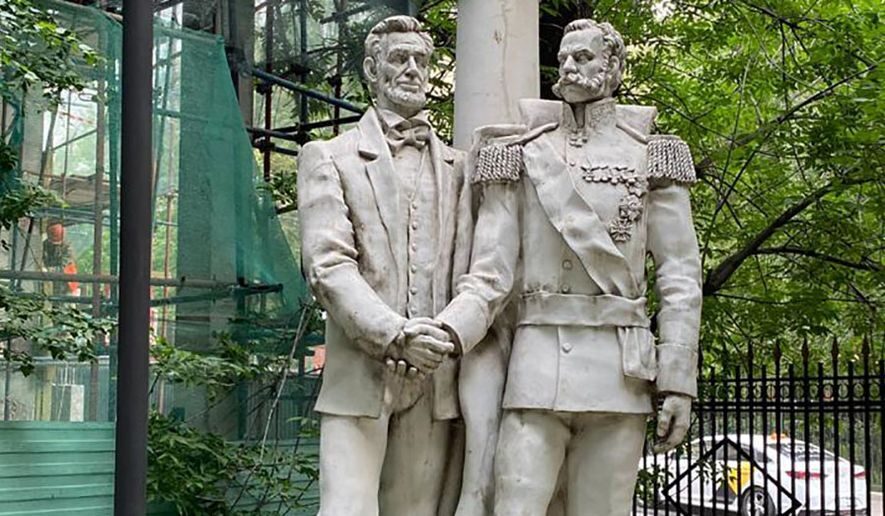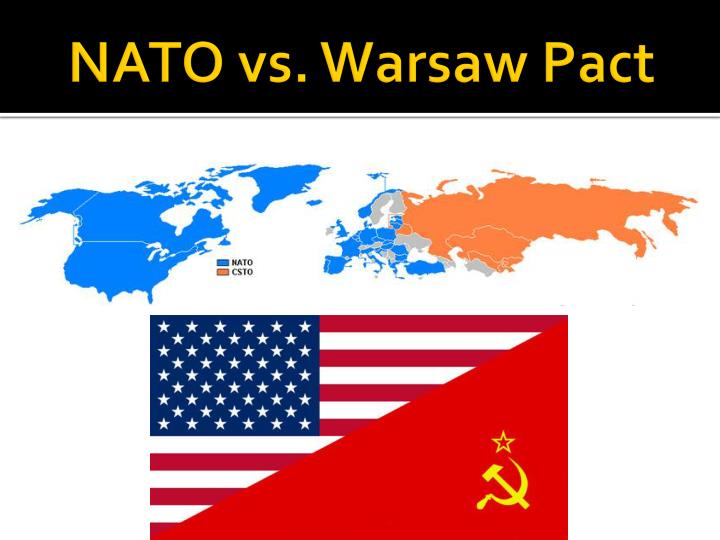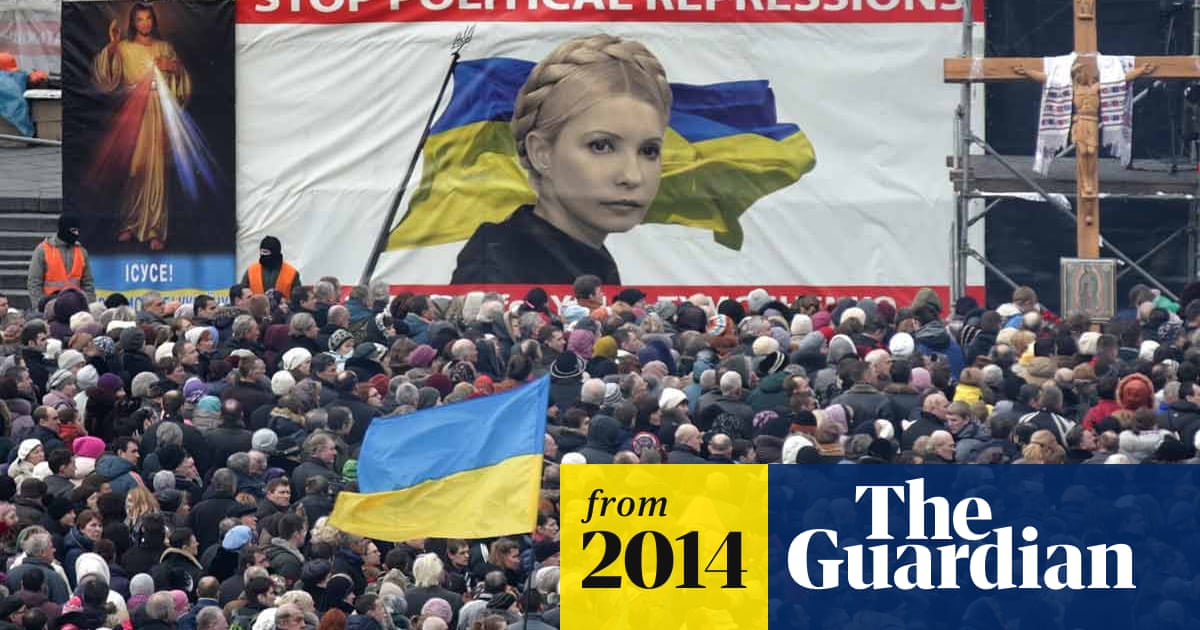
How to Turn a Friend into an Enemy:
A Brief History of US-Russia Relations
Once upon a time there was a country called the Russian Empire, which was America’s friend since its birth in 1776 till 1917, when the Bolshevik coup in Russia brought communists to power.
Edward Lozansky / NewKontinent
(September 25, 2022) — During the American Civil War Russian Tsar Alexander II helped save the Union by sending two naval squadrons to New York and San Francisco and placing them at the service of President Lincoln. A symbolic statue of these events is located in downtown Moscow, showing the two men shaking hands.
In 1918 America also sent two military units to Russia’s North Western and Far Eastern ports of Arkhangelsk and Vladivostok to fight the Bolsheviks, but their missions turned out to be a failure.
As a result, diplomatic relations between the two nations were broken and restored only in 1933 with the USSR — the Union of Soviet Socialist Republics, the new name Russia had used since 1922.
In 1941-45 the United States and USSR became allies in the war against Nazi Germany. Next to the Lincoln and Alexander II statue there is another sculpture of American and Soviet soldiers shaking hands on the Elbe River in Germany, on the eve of their joint victory in World War II.
However, almost immediately thereafter the Cold War erupted when the former allies became mortal enemies, each threatening the other with nuclear weapons, which America already used in Japan in August 1945.
Both the US and the USSR behaved badly on the international arena during the Cold War.
US gave asylum to thousands of Ukrainian Nazi collaborators and other members of the Ukraine nationalist movement with the intention to sabotage, divide, and destabilize the USSR.
At the same time Soviet Union was organizing and financing the communist movement throughout the world (including in the US) while keeping the countries of Eastern Europe under full control with the help of loyal to Moscow local leaders.

Two competing military blocks, NATO and Warsaw Pact, were established. The 1962 Cuban missile crisis brought us close to a nuclear war, but John Kennedy and Nikita Khrushchev managed to reach a peace deal.
United States started numerous wars and orchestrated regime changes around the world.
According to the Washington Post, between 1947 and 1989 it tried to change other nations’ governments 72 times. This included wars in Korea, Vietnam, Laos, Cambodia; military operations in Lebanon, Cuba (the Bay of Pigs fiasco), the Dominican Republic, Grenada, Libya. The article lists 16 cases (12 successful) in which Washington sought to influence foreign elections by covertly funding, advising, and spreading propaganda for its preferred candidates.
Soviet Union crashed any of its satellites’ attempts to break away like during Hungarian revolt in 1956 or Czechoslovakian in 1968 while promoting communism in many countries around the world. Among them Korea, Vietnam, Guinea, Cuba, Yemen, Kenya, Sudan, Congo, Burma, Angola, Benin, Cape Verde, Laos, Kampuchea, Madagascar, Mozambique, Somalia, Seychelles, Afghanistan, Grenada, Nicaragua, and others. In 1979 USSR invaded Afghanistan, where the war continued for 10 years.
However, there a was a brief historical moment when America and Russia could return to the good old days of friendship. This was when in 1985 a new Soviet leader Mikhail Gorbachev came to power and it took him a few years to realize that his country needed fundamental political and economic reforms.
Gorbachev stopped the war in Afghanistan, negotiated with Reagan and Bush on arms control, but his messages to Washington about desire for much broader cooperation were not taken seriously.
:focal(999x0:1001x2)/dan-quayle-george-h-w-bush-1-1-2000-57ebbbae8c414e958cc074123481f58c.jpg)
His right hand man Alexander Yakovlev decided then to add the “back channels” in this process. In April 1989 he spoke to a group of visiting influential American politicians and public opinion makers, and some of his remarks were absolutely astonishing.
Senators Phil Gramm (R-TX), Bob Kasten (R-Wi), Ambassadors Frank Shakespeare and Faith Whittlesey, plus well-known foreign policy experts and journalists were told that Moscow was ready to dissolve the Warsaw Pact, let the East European countries go free, no longer spread communism around the world, and is ready for a full rapprochement with the West.
Following this meeting an informal US-Russia expert team has been formed under the leadership of Washington’s political insider Paul Weyrich and Gorbachev’s science advisor Yurl Ossipyan who was well known in the American scientific community. My role was to be a coordinator of these meetings.
There were many exchange visits by American and Russian delegations, including meetings in the White House with Vice-President Dan Quayle, Members of Congress, State Department officials, and other VIPs on both sides. As a result, a comprehensive proposal for Russia’s integration with the West was presented directly to President Bush by Paul Weyrich.
Here is what Paul told me after the meeting. “Bush listened attentively until his Russia adviser, Condoleezza Rice, walked into the Oval Office and dismissed these ideas out of hand.”
/us-president-bush-s-national-security-advisor-cond-51717447-9592db45d9a647efa6001bd833beb8a7.jpg)
Condi was obviously speaking for those in Washington who were not interested in the ideas of Russia’s rapprochement with the West, and regrettably they prevailed.
in his speeches Bush occasionally used some words like “building a new world security architecture from Vancouver to Vladivostok,” but nothing moved further.
We didn’t give up and continued generating new ideas, but after Bush lost his 1992 reelection bid, Clinton and his successors up to Biden pursued a foreign policy totally opposite to our vision.
They believed that after the collapse of the USSR America had become the only superpower in a unipolar world where the interests of Russia and of other regional powers could be largely ignored.
Donald Trump made a short-lived attempt to depart from that policy but his repeated statements that “good US-Russia relations are good for America” earned him the label of “Putin’s agent” and launched endless accusations that continue to this day.
The distinguished American diplomat George Kennan had warned of the forces arrayed against those of us who believed that US-Russia cooperation based on respect of mutual interests would be beneficial to everyone. Even before collapse of the USSR Kennan predicted that “were the Soviet Union to sink tomorrow under the waters of the ocean, the American military-industrial complex would have to remain, substantially unchanged, until some other adversary could be invented. Anything else would be an unacceptable shock to the American economy.”
He was right, but only partially because after the Soviet Union left the world’s stage the military-industrial complex was augmented by armies of ideologues from the Deep State who took the front stage in formulating US foreign policy. They believed in America’s destiny to impose their post-modern Woke globalism on all of humanity. For them a good Russia is a weak Russia. Instead of its integration with the West they wanted to push it into a geopolitical corner forever.
Martin Armstrong in his book based on declassified documents described how in the 1990s the West, NATO, and Russian oligarchy plotted to loot Russia, and takeover its natural resources.
Congressional report “Russia’s Road to Corruption” has many details of Clinton administration management of this greatest robbery of the 20th Century.
At the same time Ukraine was designated by Washington to be one of the major actors in weakening Russia.
As a result of the Soviet Union’s collapse, Ukraine — freed from the communist yoke, with strong industrial and agricultural sectors, plus a favorable climate and fertile land — had great potential to become one of the most prosperous European nations. To achieve that, it needed effective anti-corruption reforms, a certain level of autonomy for the regions with large Russian ethnic population, two state languages and a neutral status with no membership in any military blocs.
However, Washington — with the help of some Canadian and European actors plus George Soros — had other plans for this country. Almost immediately after collapse of the USSR, billions of dollars were poured into Ukraine with the goal of turning it into an anti-Russia beachhead and integrating it into NATO.

The Ukrainian Orange color revolution in 2004 did not reach all their goals, so it was followed by the February 2014 regime-change coup.
The tragic events that we have now in Ukraine are the direct results of Washington’s post-Cold War policy that rejected post-communist Russia’s proposals for friendship, and win-win cooperation.
There are many additional elements that led to the major crisis in US-Russia relations. Among them Washington domestic political intrigues using Russia as a scapegoat for internal problems, fake Russiagate scandal, the Biden family’s murky dealings in Ukraine, and more.
Geopolitics is a cynical enterprise, but since those who implement it claim the adherence to sacred Western values, it would be hard to justify how turning two nations bound by centuries-old religious, family, cultural and economic ties into enemies accords with any standard of Western or, for that matter, Judeo-Christian values.
No one knows how it is going to end, but as the drums of World War III keep banging, we can pray God’s grace to us all.
Edward Lozansky is President of the American University in Moscow